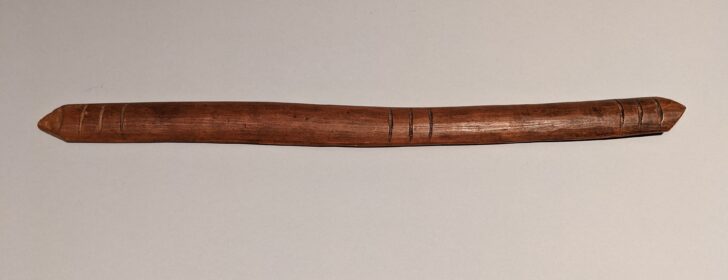Ikupasuy (Prayer Stick)
Ainu

Description
Subject Matter:
The Ainu are an indigenous minority group who are native to Hokkaidō, the northernmost island of Japan, as well as a few Russian territories. During the Meiji Period (1868-1912), as Japan spread and modernized, the Japanese government stripped them of their land and culture, so much so that it even became illegal for the Ainu to speak in their native tongue. It wasn’t until 2008 that the Japanese government recognized the Ainu as an indigenous people and made an effort to preserve their culture and end the discrimination against them.
This object is a ceremonial drinking stick called an ikupasuy. It is used by Ainu men in libation ceremonies to make offerings to gods and spirits. They dip the point of the ikupasuy into rice wine, sprinkle the drops of wine around the venerated object, then use it to lift their mustaches while they drink the rice wine. Each ikupasuy is decorated with an abstract, animal, or floral design. The design at the end of the ikupasuy represents the paternal bloodline and therefore lets the gods and spirits know who is making the offering.
Physical Description:
A flat wooden stick coming to a point at each end. It has groups of three vertical lines at each end and the middle of the stick.
Usage Rights:
If you are interested in using an image for a publication, please visit https://umma.umich.edu/request-image/ for more information and to fill out the online Image Rights and Reproductions Request Form.